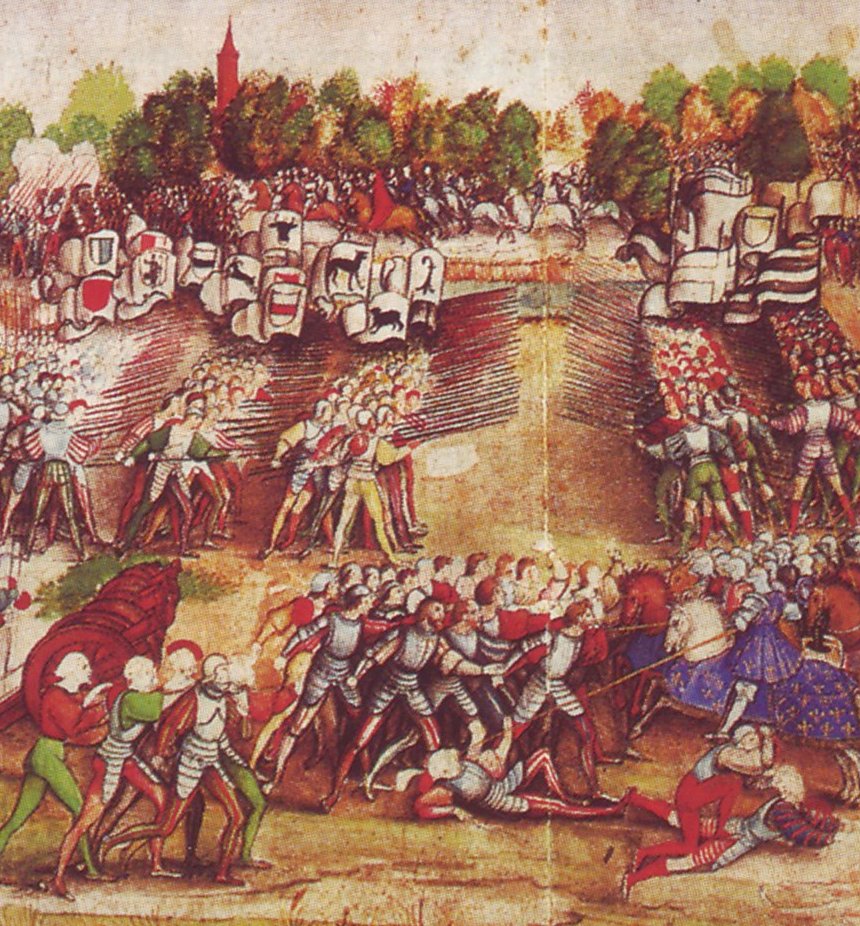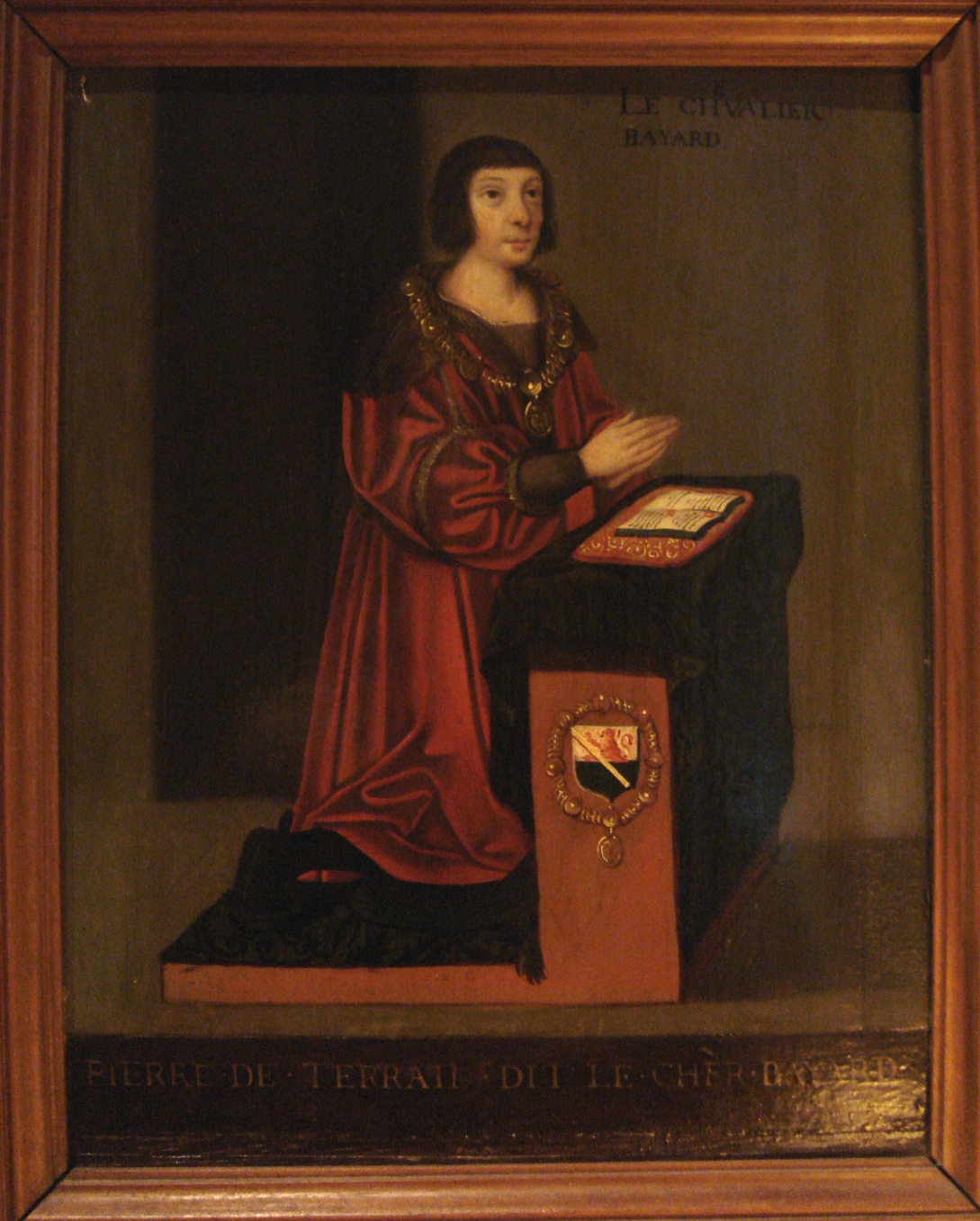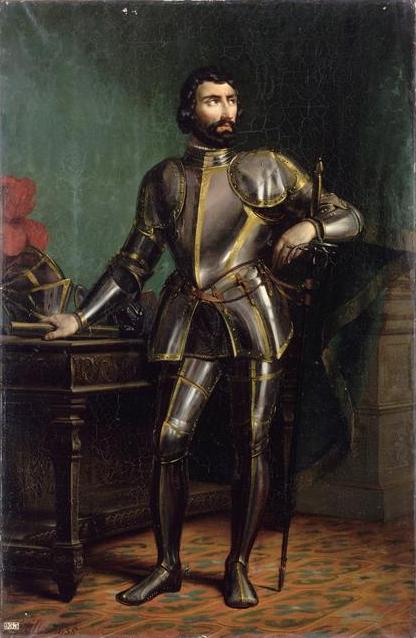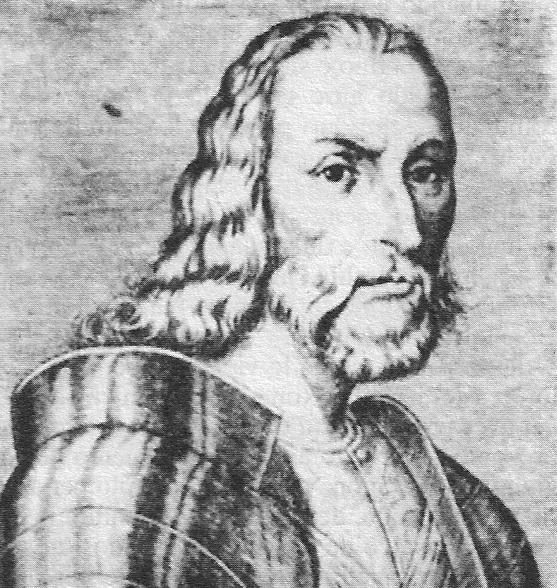|
Marignano
The Battle of Marignano was the last major engagement of the War of the League of Cambrai and took place on 13–14 September 1515, near the town now called Melegnano, 16 km southeast of Milan. It pitted the French army, composed of the best heavy cavalry and artillery in Europe, led by Francis I, newly crowned King of France, against the Old Swiss Confederacy, whose mercenaries until that point were regarded as the best medieval infantry force in Europe. With the French were German ''landsknechts'', bitter rivals of the Swiss for fame and renown in war, and their late arriving Venetian allies. Background The campaign of Marignano followed years of Swiss successes, during which French fortunes in Northern Italy had suffered greatly. The Swiss had taken control of Milan (for France the gateway to Italy) after their victory at the Battle of Novara (1513), and returned to its ducal throne Massimiliano, son of Ludovico Sforza, to make Milan a protectorate of Switzerland. The ... [...More Info...] [...Related Items...] OR: [Wikipedia] [Google] [Baidu] |
Francis I Of France
Francis I (french: François Ier; frm, Francoys; 12 September 1494 – 31 March 1547) was King of France from 1515 until his death in 1547. He was the son of Charles, Count of Angoulême, and Louise of Savoy. He succeeded his first cousin once removed and father-in-law Louis XII, who died without a son. A prodigious patron of the arts, he promoted the emergent French Renaissance by attracting many Italian artists to work for him, including Leonardo da Vinci, who brought the ''Mona Lisa'' with him, which Francis had acquired. Francis' reign saw important cultural changes with the growth of central power in France, the spread of humanism and Protestantism, and the beginning of French exploration of the New World. Jacques Cartier and others claimed lands in the Americas for France and paved the way for the expansion of the first French colonial empire. For his role in the development and promotion of the French language, he became known as ''le Père et Restaurateur des Lettr ... [...More Info...] [...Related Items...] OR: [Wikipedia] [Google] [Baidu] |
War Of The League Of Cambrai
The War of the League of Cambrai, sometimes known as the War of the Holy League and several other names, was fought from February 1508 to December 1516 as part of the Italian Wars of 1494–1559. The main participants of the war, who fought for its entire duration, were France, the Papal States, and the Republic of Venice; they were joined at various times by nearly every significant power in Western Europe, including Spain, the Holy Roman Empire, England, the Duchy of Milan, the Republic of Florence, the Duchy of Ferrara, and the Swiss. The war started with the ''Italienzug'' of Maximilian I, King of the Romans, crossing into Venetian territory in February 1508 with his army on the way to be crowned Holy Roman Emperor by the Pope in Rome. Meanwhile, Pope Julius II, intending to curb Venetian influence in northern Italy, brought together the League of Cambrai — an anti-Venetian alliance consisting of him, Maximilian I, Louis XII of France, and Ferdinand II of Aragon ... [...More Info...] [...Related Items...] OR: [Wikipedia] [Google] [Baidu] |
Chevalier Bayard
Pierre Terrail, seigneur de Bayard (c. 1476 – 30 April 1524) was a French knight and military leader at the transition between the Middle Ages and the Renaissance, generally known as the Chevalier de Bayard. Throughout the centuries since his death, he has been known as "the knight without fear and beyond reproach" (''le chevalier sans peur et sans reproche''). He himself preferred the name given him by his contemporaries for his gaiety and kindness, ''"le bon chevalier"'' ("the good knight"). Appearance and personality In his portrait by Jacques de Mailles, his squire and biographer, Bayard appears as man with a sharp and pale face, with brown hair, a long nose and two attentive and bright eyes. Jacques writes that Bayard, small in stature as a child, grew considerably during adolescence; this is supported by modern studies of his skull which hypothesize that he had reached , an above-average height for his time. The French historian Aymar du Rivail described him as "court ... [...More Info...] [...Related Items...] OR: [Wikipedia] [Google] [Baidu] |
Melegnano
Melegnano (formerly Marignano; lmo, Meregnan ) is a town and ''comune'' in Italy, in the province of Milan, region of Lombardy. The town lies southeast of the city of Milan. It received the honorary title of city with a presidential decree on 26 August 1959. The town is served by the Melegnano railway station. History Melegnano was a stronghold of Milan in the Italian Wars, and known particularly for the Battle of Marignano, a victory over the Swiss in 1515. It is also known for the battles between the French and Austrians in the Second Italian War of Independence (1859). Twin towns Melegnano is twinned with: * Paullo, Italy, since 2007 * Paris, France, since 2009 Main sights *Church of St. John the Baptist, housing an oil painting by Borgognone. *Medici Castle, with frescoed halls depicting military deeds of the Medici and views of German cities and of Lake Como. *Parchetto of Melegnano, with trees and benches famous for the old people created by Leonardo da Vinci ... [...More Info...] [...Related Items...] OR: [Wikipedia] [Google] [Baidu] |
Old Swiss Confederacy
The Old Swiss Confederacy or Swiss Confederacy (German language, Modern German: ; historically , after the Swiss Reformation, Reformation also , "Confederation of the Swiss") was a loose confederation of independent small states (, German or In the charters of the 14th century described as "communities" (, ), the German term ''Orte'' becomes common in the early 15th century, used alongside "estate" after the Reformation. The French term is used in Fribourg in 1475, and after 1490 is increasingly used in French and Italian documents. It only enters occasional German usage after 1648, and only gains official status as synonym of with the Act of Mediation of 1803. ), initially within the Holy Roman Empire. It is the precursor of the modern state of Switzerland. It formed during the 14th century, from a foundation of the Old Swiss Confederacy, nucleus in what is now Central Switzerland, growth of the Old Swiss Confederacy, expanding to include the cities of Zürich and Bern by ... [...More Info...] [...Related Items...] OR: [Wikipedia] [Google] [Baidu] |
Gendarme (historical)
A ''gendarme'' was a heavy cavalryman of noble birth, primarily serving in the French army from the Late Middle Ages to the Early Modern period. Heirs to the knights of French medieval feudal armies, French Gendarmes also enjoyed a stellar reputation and were regarded as the finest European heavy cavalry force until the decline of chivalric ideals largely due to the ever-evolving developments in gunpowder technology. They provided the Kings of France with a potent regular force of armored lancers which, when properly employed, dominated late medieval and early modern battlefields. Their symbolic demise is generally considered to be the Battle of Pavia, which inversely is seen as confirming the rise of the Spanish Tercios as the new dominant military force in Europe. Etymology The word ''gendarme'' derives originally from the French ''homme d'armes'' (man-at-arms), plural of which is ''gens d'armes''. The plural sense was later shortened to ''gendarmes'' and a singular mad ... [...More Info...] [...Related Items...] OR: [Wikipedia] [Google] [Baidu] |
Gian Giacomo Trivulzio
Gian Giacomo Trivulzio (1440 or 1441 – December 5, 1518) was an Italian aristocrat and '' condottiero'' who held several military commands during the Italian Wars. Biography Trivulzio was born in Milan, where he studied, among others, with Galeazzo Maria Sforza. In 1465, he followed the latter's army in France to help King Louis XI of France. He also took part in the Milanese campaigns against Bartolomeo Colleoni and fought alongside Federico III da Montefeltro in the wars in Romagna. In 1478, he supported the Florentines against Pope Sixtus IV's expansionism. Two years later, he acquired the castle of Mesocco. In 1483, he abandoned Ludovico Sforza and switched his allegiance to Charles VIII of France. In 1484, he defeated the Venetians at Martinengo. In 1488, he married Beatrice d'Avalos, after his first wife (Margherita Colleoni) had died. In June the same year, he moved to southern Italy, entering the service of the Kingdom of Naples and its ruler Ferdinan ... [...More Info...] [...Related Items...] OR: [Wikipedia] [Google] [Baidu] |
Bartolomeo D'Alviano
Bartolomeo d'Alviano (c. 1455 – October 1515) was an Italian condottiero and captain who distinguished himself in the defence of the Venetian Republic against the Holy Roman Emperor Maximilian. Biography Bartolomeo d'Alviano was born in 1455 to a noble family in Umbria at Todi to Francesco d'Alviano and Isabella degli Atti. He fought very early in his life in Central Italy, serving in the Papal States and, in 1496, the Orsini family against Pope Alexander VI and the Colonna. In May 1497, Bartolomeo massacred Ghibellines in Todi while reinstalling the Guelfs. The next year he entered the service of Venice until 1503 when he joined the Orsini. Bartolomeo was then hired by Ferdinand II of Spain. He distinguished himself in the victory at the Battle of Garigliano over the French army, which started the Spanish domination over southern Italy. In 1506, he returned to the Republic of Venice; he would remain in its service until his death. The following year Bartolomeo defeated the ... [...More Info...] [...Related Items...] OR: [Wikipedia] [Google] [Baidu] |
Matthäus Schiner
Matthäus Schiner (or ''Schinner'', c. 1465 – 1 October 1522) was a bishop of Sion, Cardinal and diplomat. He was a military commander in several battles in northern Italy. Biography He was born in Mühlebach (in what is now the Swiss canton of Valais), the son of the farmer and carpenter Peter Schiner and Anna Welschen; his uncle Nicholas Schiner, later Bishop of Sion (Sitten), gave him his early instruction. He embraced the ecclesiastical career, and eventually became parish priest of Aernen (1496), and canon and dean of the cathedral of Sion. When his uncle resigned, he was made Bishop of Sion (20 September 1499). Schinner's diplomatic skill and his influence on the allied Swiss Confederacy made him the right hand of Pope Julius II and Pope Leo X in their efforts to unite Italy and expel the French. In 1511, as a result of an alliance brought about by Schiner, the Swiss made two unsuccessful campaigns against Milan. As a reward for securing this alliance, he was made B ... [...More Info...] [...Related Items...] OR: [Wikipedia] [Google] [Baidu] |
Charles III, Duke Of Bourbon
Charles III, Duke of Bourbon (17 February 1490 – 6 May 1527) was a French military leader, the count of Montpensier, Clermont and Auvergne, and dauphin of Auvergne from 1501 to 1523, then duke of Bourbon and Auvergne, count of Clermont-en-Beauvaisis, Forez and La Marche, and lord of Beaujeu from 1505 to 1521. He was also the constable of France from 1515 to 1521. Also known as the Constable of Bourbon, he was the last of the great feudal lords to oppose the king of France. He commanded the troops of Holy Roman Emperor Charles V in what became known as the Sack of Rome in 1527, where he was killed. Family Charles was born at Montpensier, the second son of Count Gilbert of Montpensier by his wife Clara Gonzaga (1 July 1464 – 2 June 1503). Gilbert died in 1496, and his elder son, Louis II, died unwed in 1501, leaving Charles the heir to the family's titles and extensive lands in Auvergne. Marriage Charles married his agnatic second cousin, Suzanne, Duchess of Bourbon. ... [...More Info...] [...Related Items...] OR: [Wikipedia] [Google] [Baidu] |
Prospero Colonna
Prospero Colonna (1452–1523), sometimes referred to as Prosper Colonna, was an Italian condottiero in the service of the Papal States, the Holy Roman Empire, and the Kingdom of Spain during the Italian Wars. Biography A member of the ancient noble family of the Colonna, he was born in Civita Lavinia, near Velletri (Lazio), in 1452. He was a cousin of Fabrizio Colonna. His first notable action as a military leader was in 1484, when he defended the family castle of Paliano against an assault by the rival Orsini and Riario families. After some other battle deeds, Prospero, who had joined Cardinal Giuliano della Rovere's party, was imprisoned in Castel Sant'Angelo (Rome) by Pope Alexander VI. Once freed, he was soon imprisoned again for his allegiance to Charles VIII of France during his invasion of Italy. In the end, the King of France was victorious against the Pope and entered Rome, backed by Prospero and Fabrizio Colonna, in 1495. During the brief French rule over the Kingd ... [...More Info...] [...Related Items...] OR: [Wikipedia] [Google] [Baidu] |
Jacques De La Palice
Jacques de La Palice (or de La Palisse) (1470 – 24 February 1525) was a French nobleman and military officer. He was the lord of Chabannes, La Palice, Pacy, Chauverothe, Bort-le-Comte and Héron. In 1511, he received the title of Grand Master of France. As a Marshal under Francis I, he fought against Habsburg armies, and died during the battle of Pavia. Biography He was born at Lapalisse, Auvergne. At 15, La Palice entered the service of King Charles VIII of France, of his same age. His first battle was that of Saint-Aubin-du-Cormier (1488). Four years later he married Jeanne de Montbéron, daughter of chamberlain Eustache de Montbéron. In 1494 he followed the king in war for the Kingdom of Naples, taking part in the latter city's capture in 1495, as well as in the battle of Fornovo (1498) against the Italian League, which allowed the French army to retreat in their homeland. After Charles' death, La Palice accompanied the new King, Louis XII, in the campaign for M ... [...More Info...] [...Related Items...] OR: [Wikipedia] [Google] [Baidu] |








